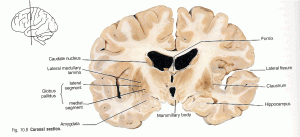

An Article posted on ScienceDaily is very interesting as it goes into talking about women who have eating disorders. There is a study conducted at the University of Haifa in Israel. There is the comparison of women who suffer from anorexia and bulimia to two different groups of women; women who had no eating disorders but were overweight, and women who had no eating disorders and were normal weight. A research conducted was for 76 women to ”complete two standardized questionnaires for screening eating disorders and were then asked to draw themselves” (Guez et al 2010).
The results were correlating as women who suffered from anorexia and bulimia drew their respective body parts differently. As stated in the ScienceDaily the following results were obtained
”
- The neck: women suffering from anorexia or bulimia tended to draw a larger neck, a disconnected neck or no neck at all;
- The mouth: this feature was more emphasized in drawings by women suffering from anorexia or bulimia;
- The thighs: women with eating disorders drew wider thighs than the other groups in the study;
- The feet: women with eating disorders tended to draw pictures without feet or with disconnected feet.
This allowed researchers to summarize that women with anorexia and bulimia ” tended to omit breasts from their drawings, drew less defined body lines and smaller figures relative to the page size” (Guez et al 2010).
Here is an image of the women drawings.


For more information go to the direct link
http://www.sciencedaily.com/releases/2011/02/110214102124.htm








